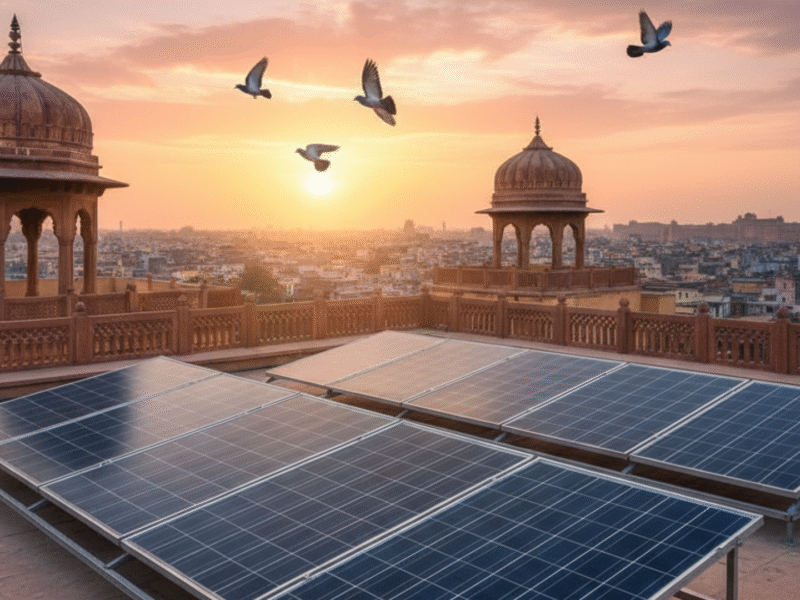
Have you ever gazed at a rooftop covered in sleek, dark panels and wondered exactly how they turn sunlight into the power that runs a home? It’s a question many people have as they consider switching to a cleaner, more sustainable energy source. The process is a fascinating blend of science and engineering, transforming the most abundant resource on Earth—sunlight—into usable electricity. If you’re considering a switch to solar energy, understanding the basics is the first and most crucial step. This comprehensive guide will walk you through exactly how rooftop solar panels work and what you need to know before you contact rooftop solar companies.
Capturing Sunlight (The Photovoltaic Effect)
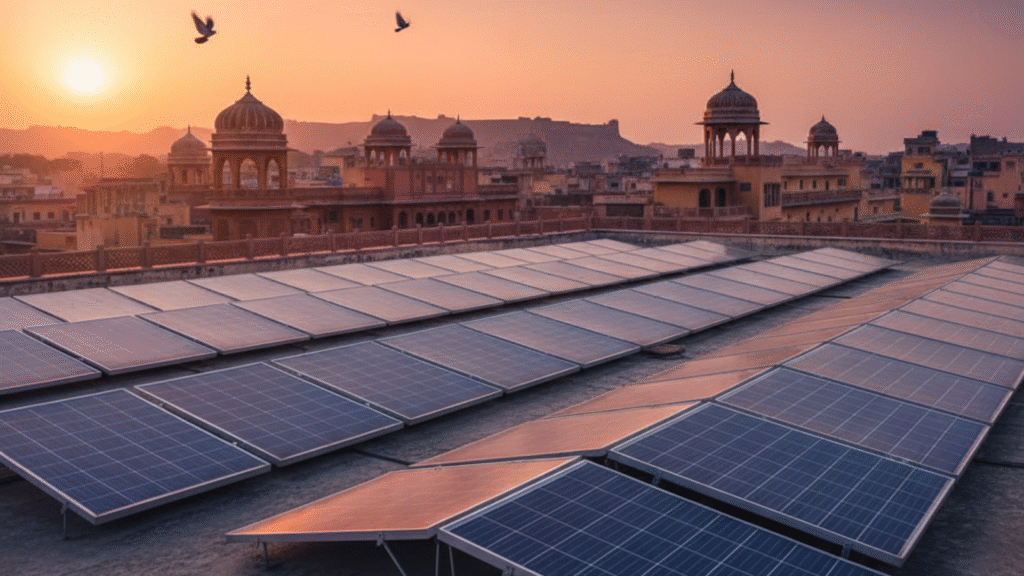
The journey of solar power begins with the sun itself. Rooftop solar panels are composed of multiple smaller units called photovoltaic (PV) cells. These cells are most commonly made from crystalline silicon. When sunlight, which is made up of tiny energy particles called photons, hits the PV cells, it excites the electrons within the silicon. This process, known as the photovoltaic effect, generates a flow of electrons. This flow creates a direct current (DC) of electricity. Think of it like a tiny, continuous battery—it’s a direct conversion of light into electrical energy.
This initial stage is entirely passive; no moving parts are required. The solar panels simply sit on your roof, quietly collecting photons and generating DC power whenever the sun is shining. The efficiency of this process depends on the type of solar panel, the amount of sunlight hitting it, and the panel’s temperature.
Converting DC to Usable AC Power
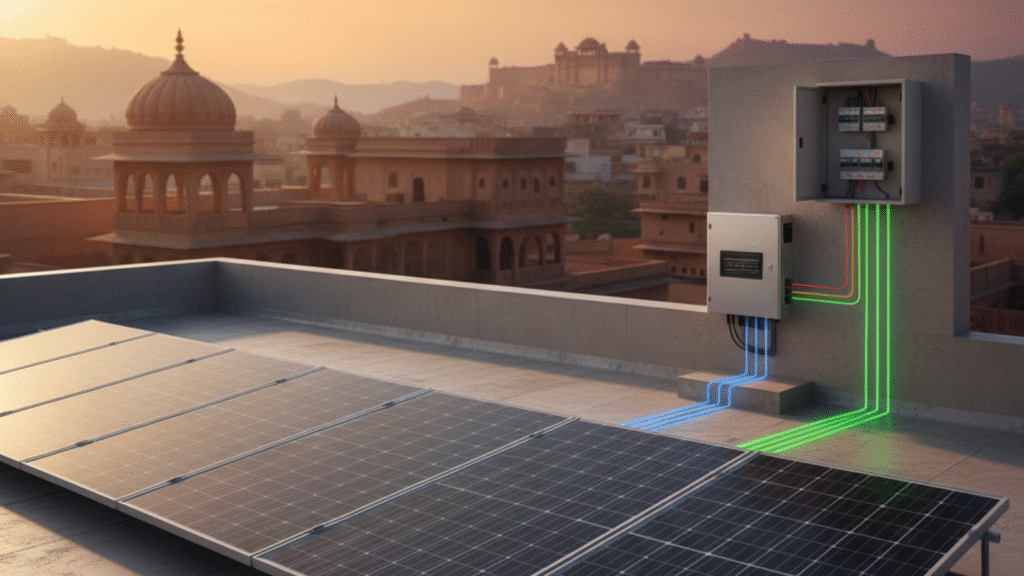
Your home appliances, from your television and computer to your refrigerator and washing machine, are all designed to run on alternating current (AC) electricity. The DC power that solar panels produce cannot be used by these devices directly. This is where a crucial piece of equipment, called an inverter, comes in.
The inverter’s job is to take all the DC power generated by your panels and convert it into usable AC power. This is a critical step in the entire process. Without an inverter, the energy generated by your solar system would be useless for your home.
There are a few different types of inverters, each with its own advantages:
Power Optimizers: These are a hybrid solution. An optimizer is installed on each panel to condition the DC power, which is then sent to a central string inverter for conversion. This provides the best of both worlds—individual panel optimization with the simplicity of a single inverter.
String Inverters: These are the most common type. They are a single central unit that handles the conversion for a whole “string” of panels. They are a cost-effective option, but if one panel in the string is shaded or malfunctioning, it can slightly reduce the output of the entire string.
Microinverters: These are smaller inverters installed on each individual panel. This means each panel operates independently. If one panel is shaded or dirty, the others continue to produce at full capacity, maximizing the overall energy production of your system. Many leading rooftop solar companies are now recommending microinverters for their superior performance and reliability.
Powering Your Home and the Grid
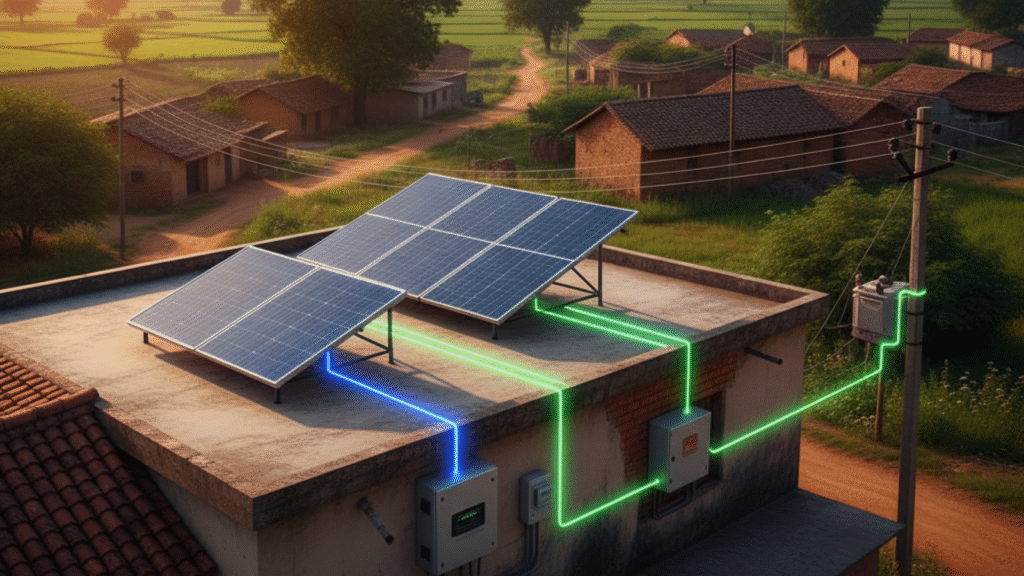
Once the solar power is converted to AC, it goes to your home’s main electrical panel, also known as the breaker box. At this point, the electricity can be used in one of three ways:
- Direct Use: The most efficient scenario is when the solar power is used instantly to power your home’s electrical loads. This could be running your lights, appliances, and devices during the day. This is a direct saving on your utility bill, as you are not pulling any power from the grid.
- Sending to the Grid: If your panels produce more electricity than you are currently using, the excess power is sent back to the utility grid. With a system called net metering, your utility company will track this excess energy and credit you for it. This credit can be used to offset the cost of electricity you use at night or on cloudy days. Many states and utility companies have net metering policies in place that make solar a highly attractive financial investment.
- Storing in a Battery: For greater energy independence, you can choose to add a solar battery storage system. Excess solar energy is stored in the battery instead of being sent to the grid. This stored power can then be used at night when the sun is not shining or during a power outage, ensuring you have backup power when you need it most.
The Role of Rooftop Solar Companies
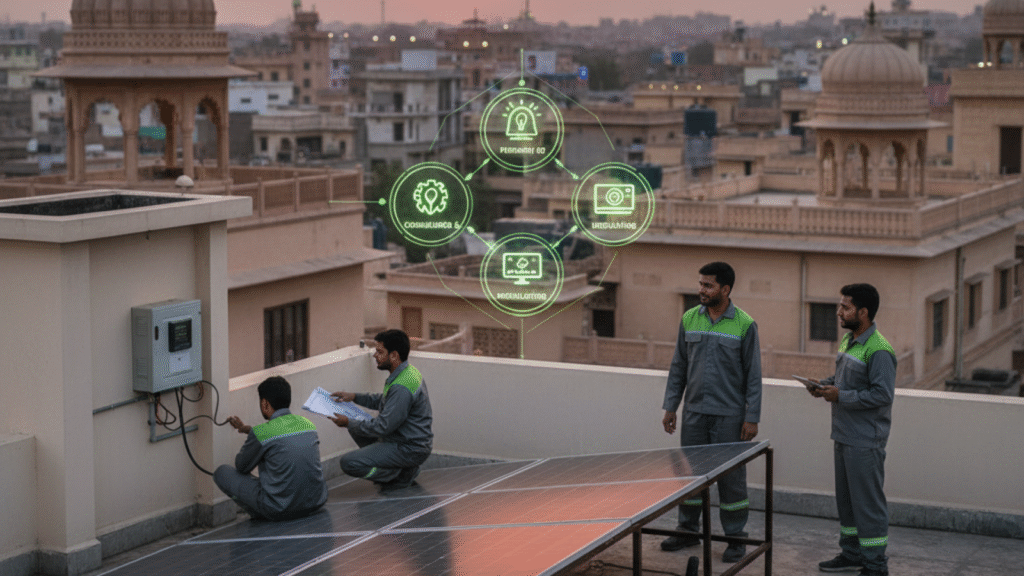
While the science is straightforward, the successful installation and system design require expertise. That’s why professional rooftop solar companies are essential. They handle the entire process for you, from start to finish. In addition, a reputable company ensures your system is sized correctly, installed safely, and performs efficiently for decades.
| Service | Description |
| Consultation & Design | They assess your home’s energy needs and roof suitability to design a customized system. |
| Permitting & Paperwork | They navigate complex local regulations and secure all necessary permits. |
| Installation | Experts install the panels, inverter, and wiring safely and efficiently. |
| Maintenance & Support | They provide ongoing support and troubleshooting to keep your system performing at its best. |
Key Components of a Rooftop Solar System

When you work with rooftop solar companies, you’ll hear about these essential components. Knowing what they are will help you have a more informed conversation.
| Component | Function |
| Solar Panels | Capture sunlight and convert it into DC electricity. |
| Inverter | Converts DC power into AC electricity for home use. |
| Mounting Rack | Securely attaches panels to your roof. |
| Electrical Wiring | Safely connects all components to your electrical panel and the grid. |
| Electrical Meter | Tracks the electricity flowing to and from the grid for billing. |
| Solar Battery (Optional) | Stores excess energy for use during the night or power outages. |
Frequently Asked Questions (FAQ)
Q1: How long do rooftop solar panels last?
A. Most high-quality solar panels are built to last for 25 to 30 years or more. Reputable rooftop solar companies offer performance warranties that guarantee a certain level of power output for at least two decades.
Q2: Can I get solar panels if my roof is old or has trees around it?
A. It depends. Your roof should be in good structural condition to support the panels for their entire lifespan. For tree shading, a professional solar company can perform a site assessment to determine if your roof gets enough sunlight. They may suggest trimming trees or using microinverters to maximize efficiency.
Q3: Do solar panels work on cloudy days or in the winter?
A. Yes, but with reduced output. Solar panels still produce electricity from diffuse sunlight, even on overcast days. In the winter, snow may temporarily cover panels, but it often melts off quickly, and the cold weather can actually improve panel efficiency.
Q4: How much does a rooftop solar system cost?
A. The cost varies widely based on your energy needs, location, and the size of the system. It’s best to get a customized quote from rooftop solar companies in your area. They can also inform you about available federal tax credits, state rebates, and financing options that can significantly.

